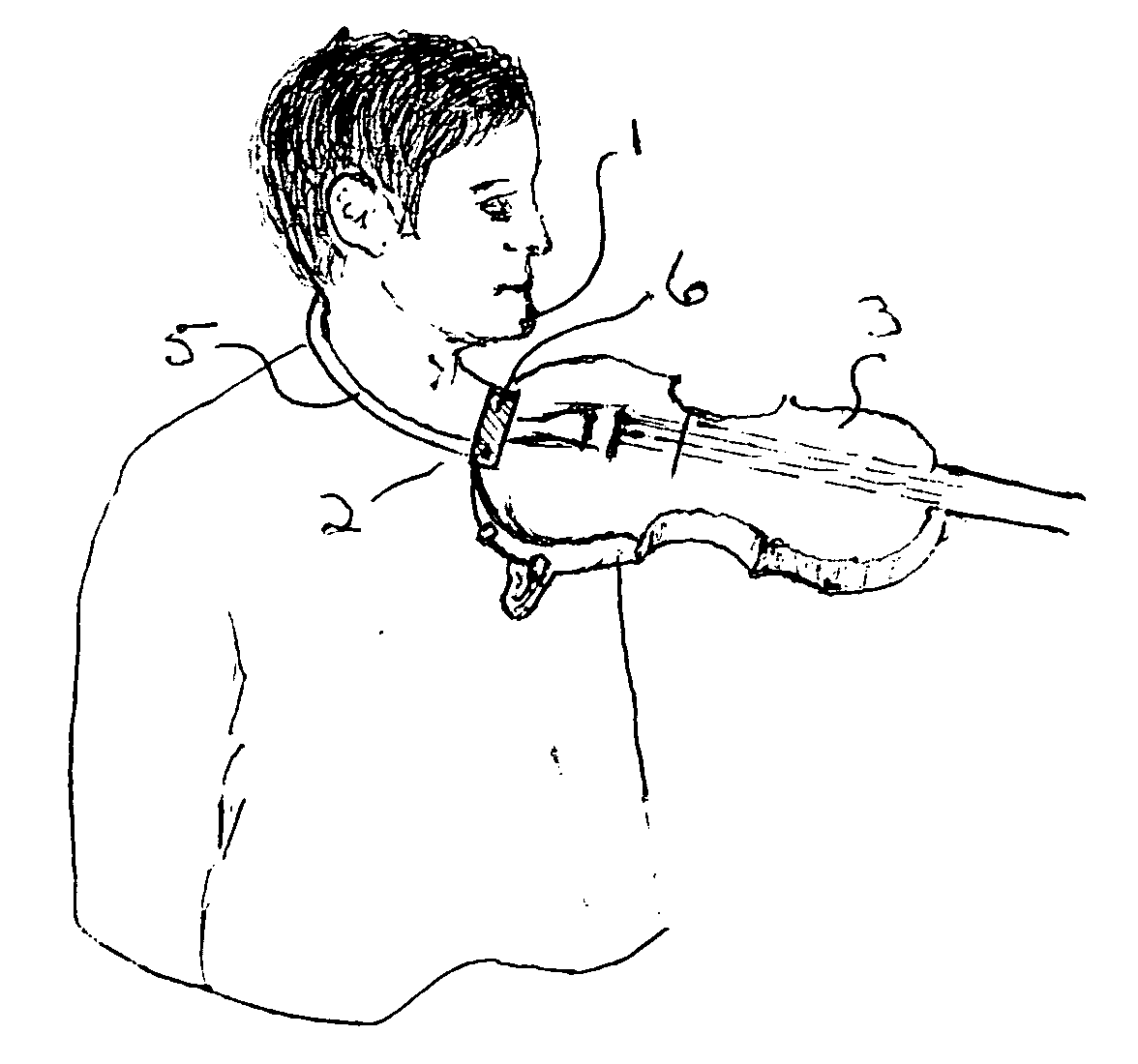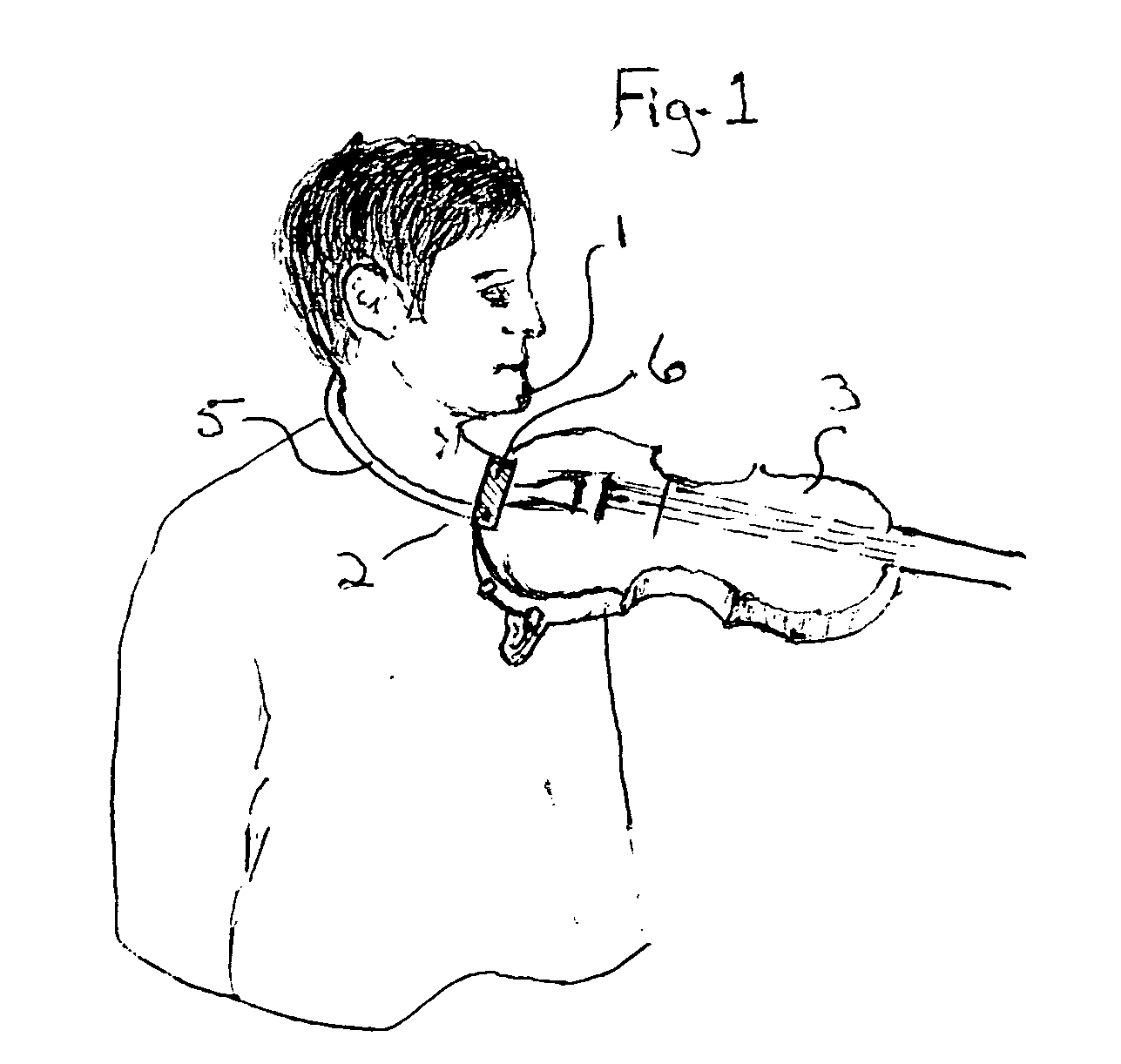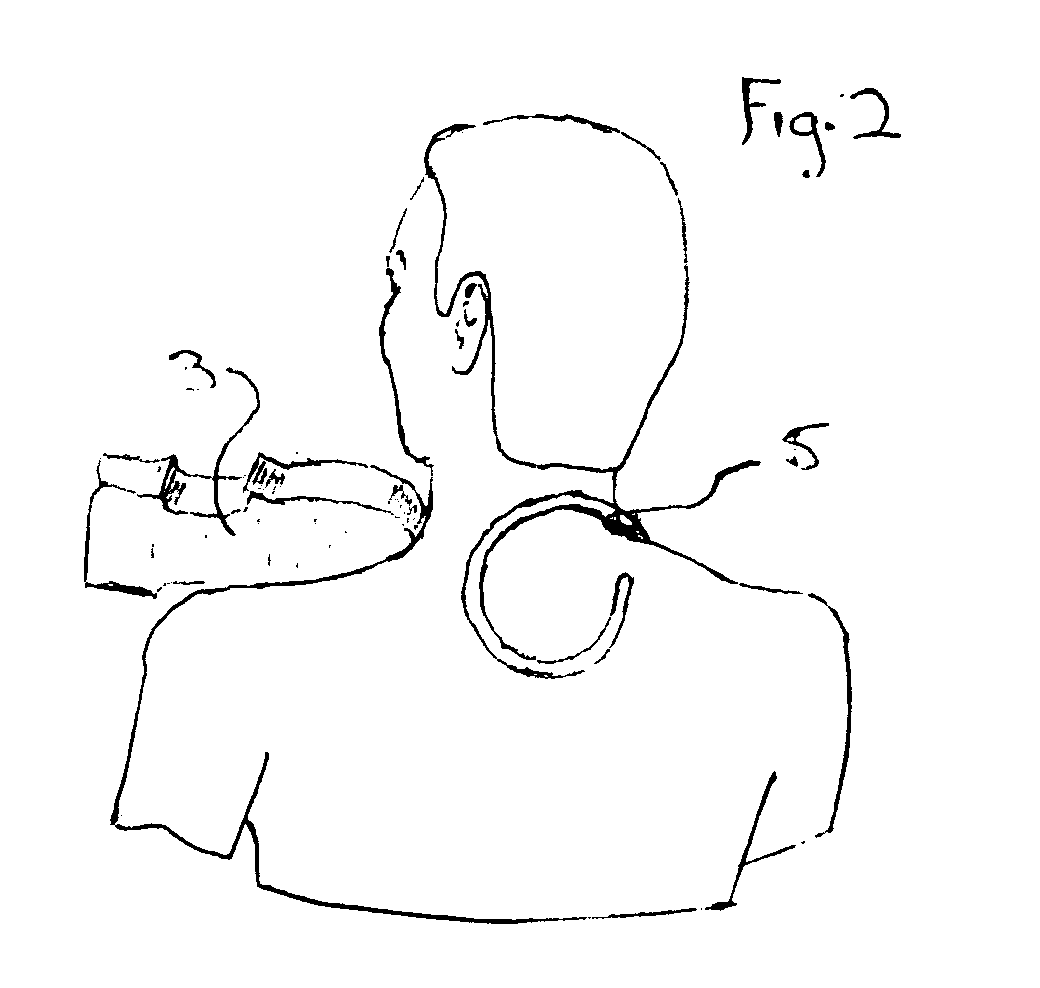Violin support
a technology for violins and supports, applied in the field of violin and viola support, can solve the problems of difficulty in learning to play the violin (or viola), overuse injuries of the neck and back, and other health problems, and no known device provides the violinist with a support mechanism
- Summary
- Abstract
- Description
- Claims
- Application Information
AI Technical Summary
Benefits of technology
Problems solved by technology
Method used
Image
Examples
Embodiment Construction
[0020] In the drawings FIG. 1 shows a musician 1 wearing an instrument support device, generally identified by the reference number 2, which shows a preferred embodiment of the invention. The instrument support 2 holds a violin 3 or viola at the left shoulder of the musician, so that the near base edge of the instrument rests on the musicians left shoulder and upper chest but avoiding the need for the musician to hold the instrument in place using the conventional method of holding the instrument using his chin.
[0021] The instrument support device 2 includes a neck-hook 5 or neck and back engaging portion and an instrument support base 6 that is used as a means of attaching the neck-hook to the instrument. FIGS. 3 through 7 show details of the various components of the instrument support device, and the following discussion refers to all the drawing figures.
[0022] As illustrated, the instrument support device 2 of the invention is preferably low profile and hardly noticeable when ...
PUM
 Login to View More
Login to View More Abstract
Description
Claims
Application Information
 Login to View More
Login to View More - R&D
- Intellectual Property
- Life Sciences
- Materials
- Tech Scout
- Unparalleled Data Quality
- Higher Quality Content
- 60% Fewer Hallucinations
Browse by: Latest US Patents, China's latest patents, Technical Efficacy Thesaurus, Application Domain, Technology Topic, Popular Technical Reports.
© 2025 PatSnap. All rights reserved.Legal|Privacy policy|Modern Slavery Act Transparency Statement|Sitemap|About US| Contact US: help@patsnap.com



